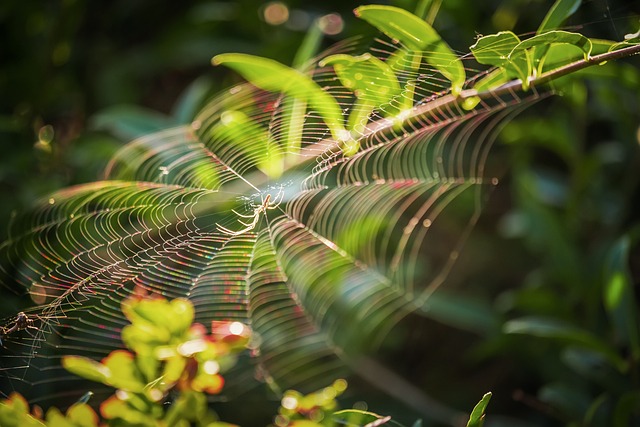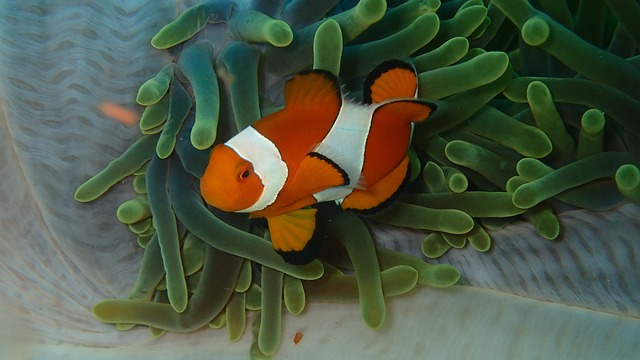Can you imagine life without your friends, siblings, and others? Who would you talk to, hang out with or fight with? Life would be so lonely! You rely on your friends for companionship, support, or fun. Just like us, other living organisms rely on each other too.
Nothing on Earth exists in its own little bubble. Species interact all the time. This interaction plays an important role in how organisms develop and change over time. It is interesting to see how species interact with their surroundings.
In this lesson, we will talk about the different ways of how species interact with their surroundings.
An ecosystem refers to both the living things (biotic factors) and non-living things (abiotic factors) in a given area and the way they interact with each other. Living things include plants, animals, insects, and bacteria. Non-living things include all the elements of the physical environment, such as water, minerals, soil, and sunlight. Individual organisms live together in an ecosystem and depend on one another. In fact, they have many different types of interactions with each other. These types of interactions are called ecological relationships.
"Ecological relationships describe the interactions between and among organisms within their environment. These interactions may have positive, negative or neutral effects on either species' ability to survive and reproduce, or "fitness."
Organisms occupy what are called niches. A niche includes the physical space in which they live, how they use the resources that are in that space, and how they interact with other organisms in that space. The populations of all the different species that live together in an area make up an ecological community. Community ecologists examine how different species in a community interact with each other.
The interactions between species form the basis for many biological processes in ecosystems such as the food chain and the nutrient cycle. The nature of these interactions depends upon the environmental conditions and evolutionary aspects in which they exist. There are several classifications of these interactions which are found in different ecosystems.
These interactions can be inter-specific (interactions with different species) or intra-specific (interactions between the same species). Different types of interspecific interactions have different effects on the two participants, which may be positive (+), negative ( − ), or neutral (0).
Importance of Ecological Relationships
All organisms are connected to each other in an ecosystem. Organisms form relationships with each other because they are connected. Some organisms compete against other organisms for resources or space. Other organisms depend on each other to survive.
Only one species can occupy a specific niche in an ecosystem. This allows different species to live together. It also stabilizes ecosystems. The interaction between organisms in similar or overlapping niches results in an ecological relationship.
Largely, there are five types of ecological relationships. Competition is the contest between organisms for food, space, mates, and other resources. Predation is when one organism feeds on another organism. Commensalism, mutualism, and parasitism are types of ecological relationships as well. These relationships are forms of symbiosis. Symbiosis is a close and long term interaction between organisms.
Different types of interactions between different species as listed below:
Let's discuss each of these interactions in further detail.
Predation is when one organism eats another organism to obtain nutrients. The organism that eats another organism is called the 'predator' and the organism that is eaten is called the 'prey'. Examples of predation are owls that eat mice, and lions that eat gazelles. While it's most often associated with the classic predator-prey interaction, in which one species kills and consumes another, not all predation interactions result in the death of one organism. For example, a herbivore often consumes only part of the plant. While this action may result in injury to the plant, it may also result in seed dispersal.
In this, one organism wins and the other loses (+/ − interaction).

Predation
Competition exists when individuals or populations compete for the same, limiting resources. It can be interspecific (between different species), or intraspecific (between individuals of the same species).
In the 1930s, Russian ecologist Georgy Gause proposed that two species competing for the same limiting resource cannot coexist in the same place at the same time. As a consequence, one species may be driven to extinction, or evolution reduces the competition.
Competition negatively affects both participants ( − / − interaction), as either species would have a better chance to survive if it did not have to compete with the other.
Symbiosis is any relationship between two or more biological species. Such relationships are usually long-term and have a strong impact on the fitness of one or both organisms. Symbiotic relationships are characterized by the benefits and physical relationships experienced by each species.
Common types of symbiosis are categorized by the degree to which each species benefits from the interaction. On this basis, it can be mutualistic (both benefits), commensal (one benefit), or parasitic.
Symbiosis is of four types - Mutualism, Commensalism, Parasitism and Amensalism.
a. Mutualism
Mutualism refers to mutually beneficial interactions between members of the same or different species. It is a win-win association for both species. A classic example of mutualism is the relationship between insects that pollinate plants and the plants that provide those insects with nectar or pollen. Another classic example is the behavior of mutualistic bacteria in human health. Gut bacteria are very important for digestion in humans and other species. In humans, gut bacteria assist in breaking down additional carbohydrates, out-competing harmful bacteria, and producing hormones to direct fat storage. Humans lacking healthy mutualistic gut flora can suffer a variety of diseases, such as irritable bowel syndrome. Some ruminant animals, like cows or deer, rely on special mutualistic bacteria to help them break down the tough cellulose in the plants they eat. In return, the bacteria get a steady supply of food.

Insect pollinating plants
Mutualistic interaction patterns occur in three forms:
On top of these, mutualistic relationships have three general purposes:
Dispersive mutualism is when one species receives food in return for transporting the pollen of the other organism, which occurs between bees and flowers.
In mutualism, two species have a long-term interaction that is beneficial to both of them (+/+ interaction).
b. Commensalism
Commensalism is a relationship in which one organism benefits while the other is neither helped nor harmed. For example, barnacles that grow on whales and other marine animals. The whale gains no benefit from the barnacle, but the barnacles gain mobility, which helps them evade predators, and gain exposure to more diverse feeding opportunities. Other examples include

A spider web between the tree branches

Clownfish living inside a sea anemone
There are four basic types of commensal associations:
In commensalism, two species have a long-term interaction that is beneficial to one and has no effect on the other (+/0 interaction).
c. Parasitism
In parasitism, two species have a close, lasting interaction that is beneficial to one, the parasite, and harmful to the other, the host. Parasites can be ectoparasites - such as ticks, fleas, and leeches - that live on the surface of the host. Parasites can also be endoparasites - such as intestinal worms - that live inside the host. A few examples of parasites are tapeworms, fleas, and barnacles. Tapeworms are segmented flatworms that attach themselves to the insides of the intestines of animals such as cows, pigs, and humans. They get food by eating the host's partly digested food, depriving the host of nutrients.
In parasitism, two species have a long-term interaction that is beneficial to one, the parasite, and harmful to the other, the host (+/- interaction).
d. Amensalism
Amensalism describes an interaction in which the presence of one species has a negative effect on another, but the first species is unaffected. For example, a herd of elephants walking across a landscape may crush fragile plants. Amensalistic interactions commonly result when one species produces a chemical compound that is harmful to another species. The roots of black walnut produce the chemical 'juglone' which inhibit the growth of other trees and shrubs, but has no effect on the walnut tree.
In amensalism, two species have a long-term interaction that is harmful to one, and no effect on the other (-/0 interaction).
here,
(+) means a positive effect
(−) means a negative effect
(0) means no effect
| Interspecific interaction | Effect on species 1 | Effect on species 2 |
| Predation | + | − |
| Competition | − | − |
| Mutualism | + | + |
| Commensalism | + | 0 |
| Amensalism | − | 0 |
| Parasitism | + | − |